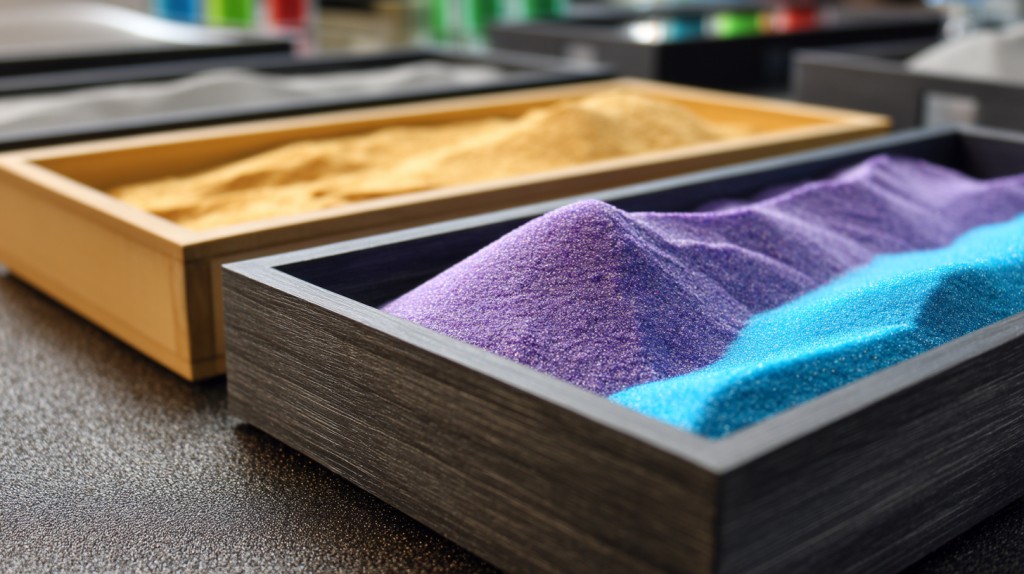
Sensory play materials have become essential tools for creativity, education, and relaxation. Among these, magic sand and kinetic sand stand out for their unique properties and versatility. If you’re curious about what is in magic sand, the answer lies in its silica base and hydrophobic coating, which transforms ordinary sand into a mess-free sensory material.
MagicSand Factory, a leading manufacturer in this space, has revolutionized these products with patented technology, ensuring premium quality and adaptability across global climates. This post explores the ingredients, benefits, and innovations behind magic hydrophobic sand and kinetic sand.
Magic sand, often called hydrophobic sand, is a type of sand coated with a water-repellent layer. This coating allows it to resist water, maintaining its dry, crumbly texture even when submerged. When shaped underwater, it holds form temporarily, creating mesmerizing effects as it interacts with liquids.
Originally developed for oil spill containment, its potential for play and education was quickly recognized. Magic sand’s unique properties make it ideal for science experiments, water tables, or stress-relief activities. Thanks to its hydrophobic layer, magic hydrophobic sand stays dry and shapable even in water, making it a favorite in both labs and playrooms.
Kinetic sand is a moldable material that combines 98% sand with 2% polydimethylsiloxane (a silicone polymer). This binding agent gives it a soft, pliable texture that holds shapes without drying out. It flows like wet sand but leaves hands clean, bridging the gap between playdough and traditional sand.
Popularized for its therapeutic qualities, kinetic sand is often used in sensory bins, classrooms, and occupational therapy. Its ability to stick to itself—but not surfaces—makes it a favorite for indoor play.

While both are sensory materials, their compositions and uses differ. Below is a quick comparison:
| Feature | Magic Sand | Kinetic Sand |
|---|---|---|
| Texture | Granular, crumbly | Smooth, dough-like |
| Best Environment | Water-based play | Dry environments |
| Primary Use | Science experiments, aquatic activities | Sculpting, stress relief |
| Cleanup | Shakes off dry; no residue | Stays contained; minimal mess |
| Sensory Experience | Crunchy, water-resistant | Soft, flowing, and moldable |
Choosing between them depends on the desired play environment and sensory experience.
MagicSand Factory distinguishes its products through spherical glass bead technology. Traditional sands use irregularly shaped grains, which can cause friction and inconsistent cohesion. By engineering perfectly round glass beads, the company achieves:
Safety is paramount in sensory products, especially for children. MagicSand Factory’s sands are rigorously tested and designed with sustainability in mind:
The company complies with international safety standards (e.g., ASTM, EN71), ensuring peace of mind for parents and educators.
These sands offer multifaceted benefits across ages and settings:
| Category | Examples |
|---|---|
| Play | Building castles, carving shapes, sensory bins |
| Education | Teaching hydrophobicity, geology, or physics principles |
| Therapy | Improving fine motor skills, stress reduction, tactile stimulation |
| Accessibility | Suitable for children with sensory processing disorders or mobility challenges |
In classrooms, therapists’ offices, or homes, they adapt to diverse needs, fostering learning and creativity.
Magic sand and kinetic sand offer distinct yet complementary experiences, united by their ability to engage the senses. MagicSand Factory elevates these materials through cutting-edge technology and a commitment to safety and sustainability. Whether you’re exploring what is in magic sand for science kits or enjoying the tactile nature of magic hydrophobic sand, these products deliver educational and emotional value.
By blending innovation with practicality, MagicSand Factory continues to redefine sensory play for all ages.
For any questions or quotes about our Sensory Sands!